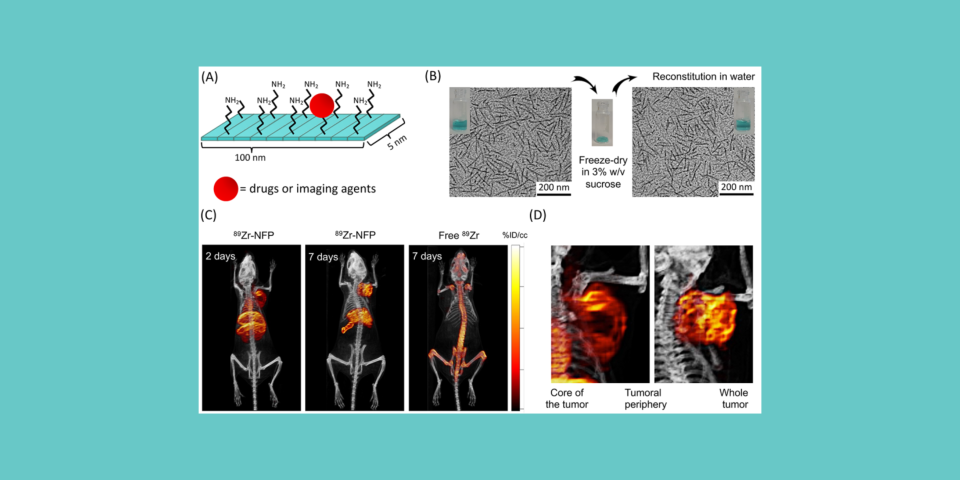The drawbacks of nanoparticles include poor tissue extravasation, incomplete drug release, and off-targeted delivery to the reticuloendothelial system and organs. In addressing these challenges, we have developed a new nanomaterial “nanofiber platform (NFP)” with unique dimensions (0.5 x 5 x 100 nm), setting it apart from other nanoparticles. Notably, the NFP exhibits excellent tumor-targeting properties (Movies 1 and 2). It can undergo a structural transformation into ten times larger interfibril networks, serving as an in situ depot that promotes weeks-long local retention. When employed as a drug carrier, the NFP demonstrates superior therapeutic efficacy in inhibiting disease progression and improving the survival of animals bearing triple-negative breast cancer tumors (Fig. 1, PMID: 30505260). Additionally, the NFP exhibits a favorable toxicity profile.


